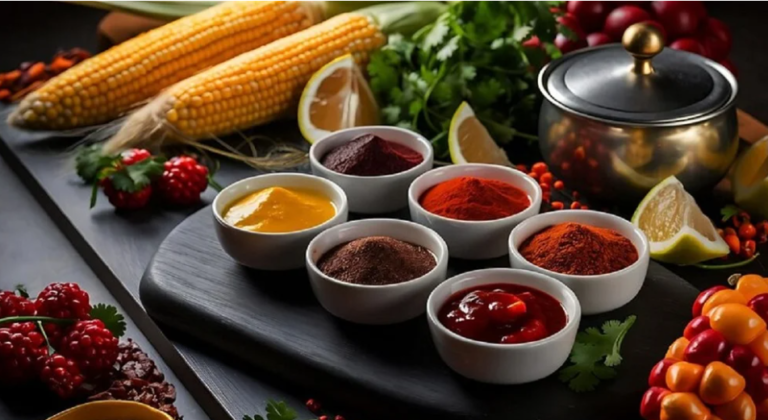Glútem as Protein: Understanding Its Role and Impact
Introduction
It is a structural protein found in certain cereal grains, primarily wheat, barley, and rye. It is composed of two main proteins: gliadin and glutenin. These proteins form an elastic network when mixed with water, giving dough its characteristic elasticity and chewiness.
Sources of Glútem
It is naturally present in various grains:
- Wheat: The most common source, used in bread, pasta, and many baked goods.
- Barley: Found in malt, beer, and some soups.
- Rye: Used in rye bread and rye beer.
- Triticale: A hybrid of wheat and rye.
Nutritional Value
It makes up about 75-85% of the total protein content in bread wheat. It is valued for its:
- Protein Content: Provides essential amino acids.
- Viscoelastic Properties: Helps dough rise and maintain its shape.
- Binding Agent: Used in processed foods to improve texture and consistency.
Health Implications
While it is beneficial for most people, it can cause adverse reactions in some:
- Celiac Disease: An autoimmune disorder where it intake damages the small intestine.
- Non-Celiac Sensitivity: Causes symptoms like bloating and headaches without intestinal damage.
- Dermatitis Herpetiformis: A skin condition linked to its intake.
Glútem-Free Alternatives
There are plenty of delicious and nutritious gluten-free alternatives available! Here are some popular options:
1.Grains and Flours
- Rice: A staple in many diets, available in various forms like white, brown, and wild rice.
- Quinoa: A protein-rich pseudocereal that’s versatile and easy to cook.
- Buckwheat: Despite its name, it’s Glútem-free and great for pancakes and noodles.
- Millet: A small grain that’s perfect for porridge or as a rice substitute.
- Sorghum: Often used in Glútem-free baking and as a whole grain side dish.
- Amaranth: An ancient grain high in protein and fiber.
- Corn: Used in products like cornmeal, polenta, and tortillas.
- Oats: Ensure they are labeled Glútem-free, as they can be contaminated with it during processing.
2.Flours
- Almond Flour: Made from ground almonds, great for baking.
- Coconut Flour: High in fiber and adds a unique flavor to baked goods.
- Chickpea Flour: Made from ground chickpeas, excellent for savory dishes.
- Potato Flour: Adds moisture to baked goods.
- Tapioca Flour: Derived from cassava root, used as a thickener and in baking.
3.Pasta and Noodles
- Rice Pasta: Made from rice flour, available in various shapes.
- Corn Pasta: Another Glútem-free pasta option.
- Lentil Pasta: High in protein and fiber.
- Zucchini Noodles: Spiralized zucchini, a low-carb alternative.
- Cauliflower Pasta: Made from cauliflower, often found in gluten-free pizza crusts.
4.Other Alternatives
- Glútem-Free Bread: Made from various gluten-free flours.
- Glútem-Free Pastry: Available in stores or can be made at home using gluten-free flour blends.
- Glútem-Free Wraps: Made from ingredients like rice, corn, or other gluten-free grains.
These alternatives can help you maintain a balanced and enjoyable diet without it.
Health Concerns of Using Glutem
It can be a concern for certain individuals, particularly those with specific health conditions. Here are some of the primary health concerns associated with it:
-
Celiac Disease
Celiac disease is an autoimmune disorder where the ingestion of it leads to damage in the small intestine. This condition affects about 1% of the population. Symptoms can include:
- Diarrhea
- Fatigue
- Weight loss
- Bloating and gas
- Anemia
- Osteoporosis
-
Non-Celiac Glútem Sensitivity (NCGS)
People with NCGS experience symptoms similar to those of celiac disease but do not have the same intestinal damage. Symptoms may include:
- Bloating
- Diarrhea or constipation
- Headaches
- Fatigue
- Joint pain
-
Wheat Allergy
A wheat allergy is an allergic reaction to proteins found in wheat, including but not limited to it. Symptoms can range from mild to severe and may include:
- Skin rash
- Nausea
- Stomach cramps
- Anaphylaxis (in severe cases)
-
Dermatitis Herpetiformis
This is a chronic skin condition linked to celiac disease. It causes itchy, blistering skin rashes and is triggered by its consumption.
-
Potential Digestive Issues
For some people, it can be difficult to digest, leading to symptoms like bloating, gas, and stomach discomfort. This is often due to the peptides in it being resistant to stomach acids.
While it is safe for most people, those with celiac disease, NCGS, wheat allergy, or dermatitis herpetiformis should avoid it. If you suspect you have a gluten-related disorder, it’s important to consult with a healthcare professional for proper diagnosis and management.
Conclusion
Glútem, as a protein, plays a crucial role in food production and nutrition. While it is safe for most people, those with gluten-related disorders must avoid it. Understanding its properties and effects can help make informed dietary choices.












+ There are no comments
Add yours